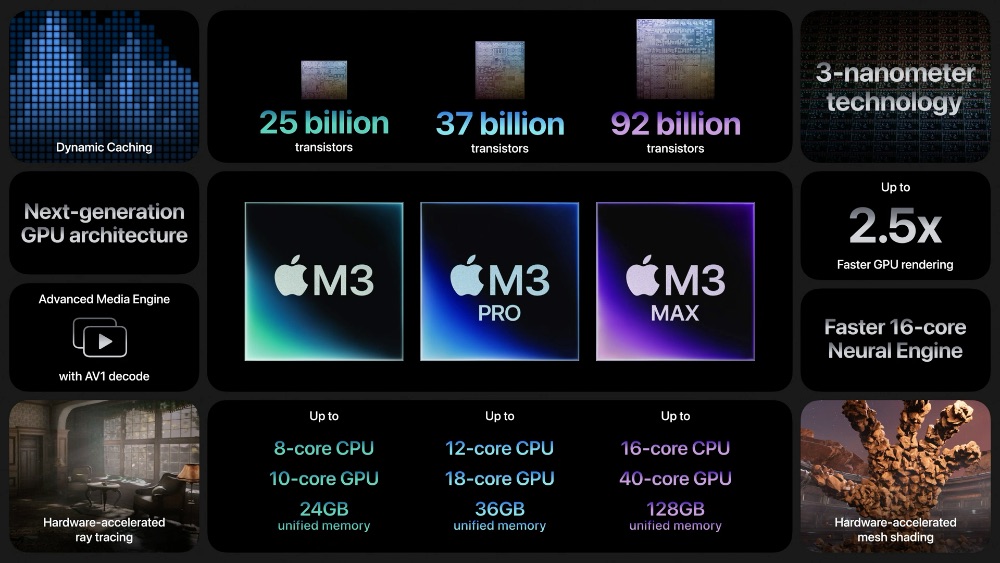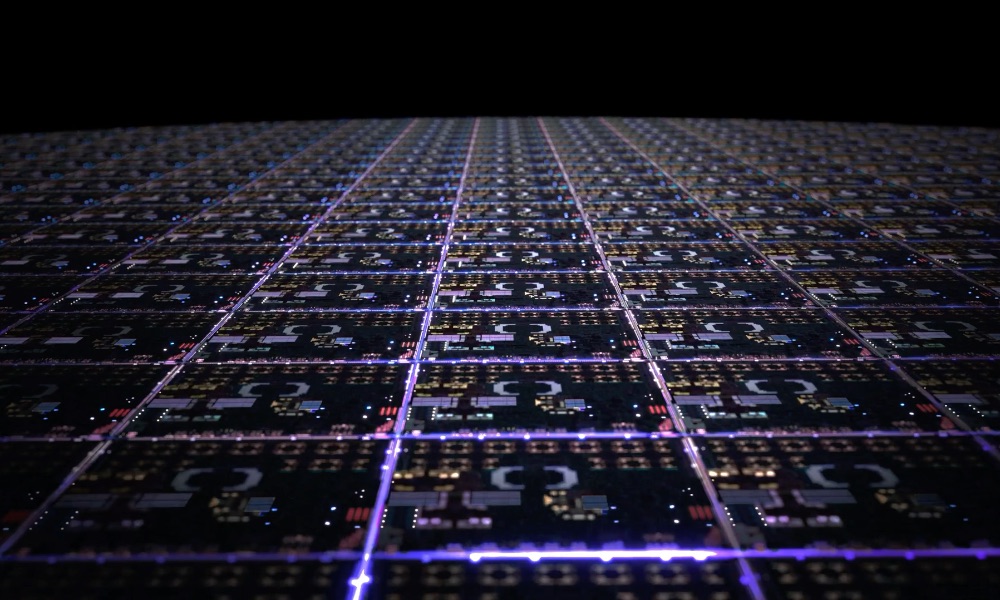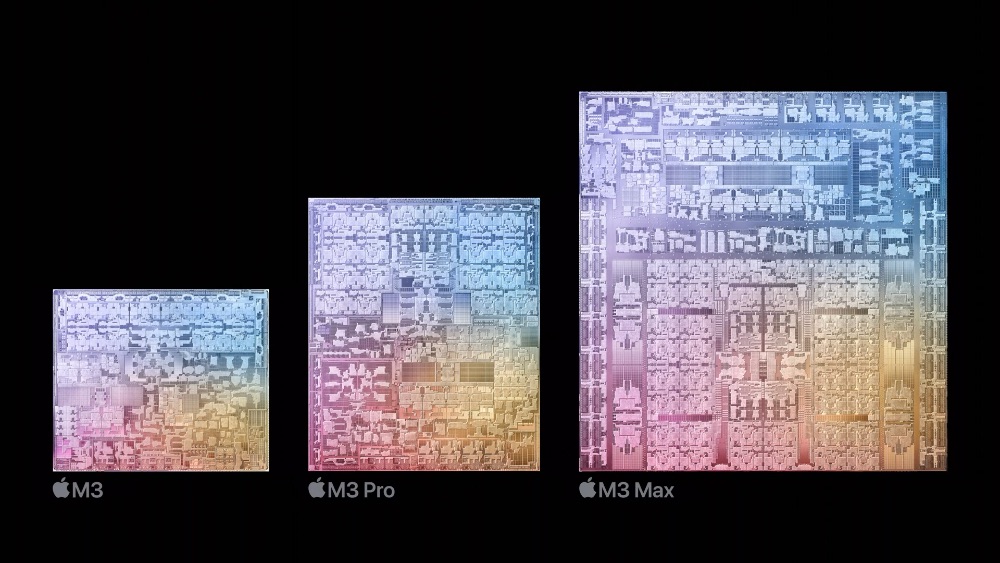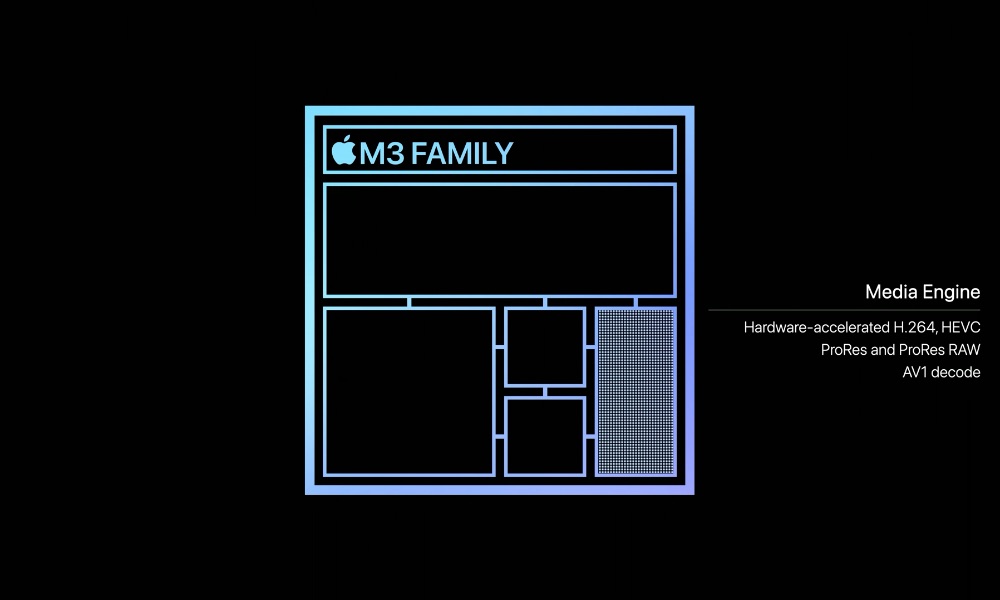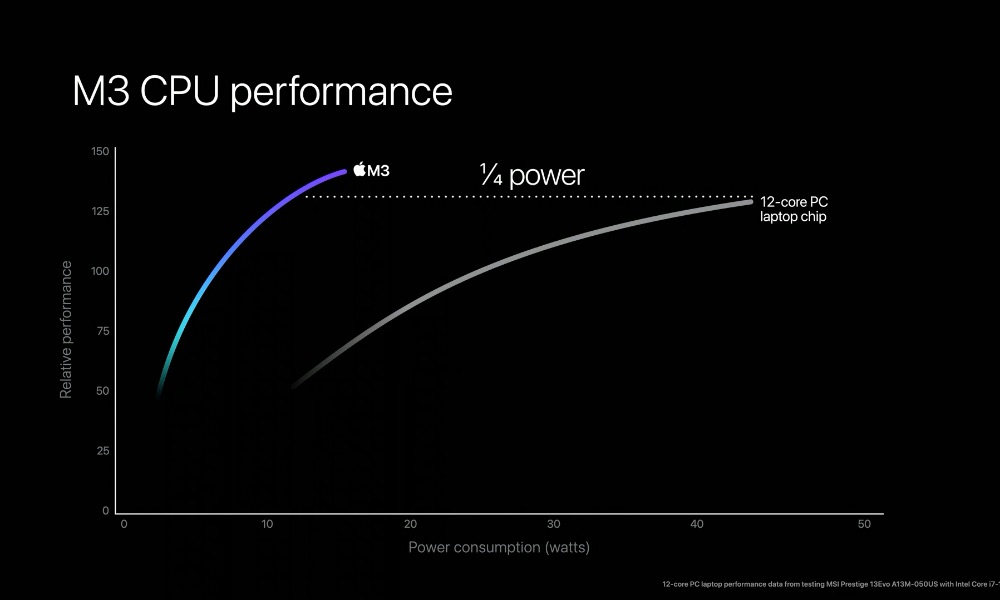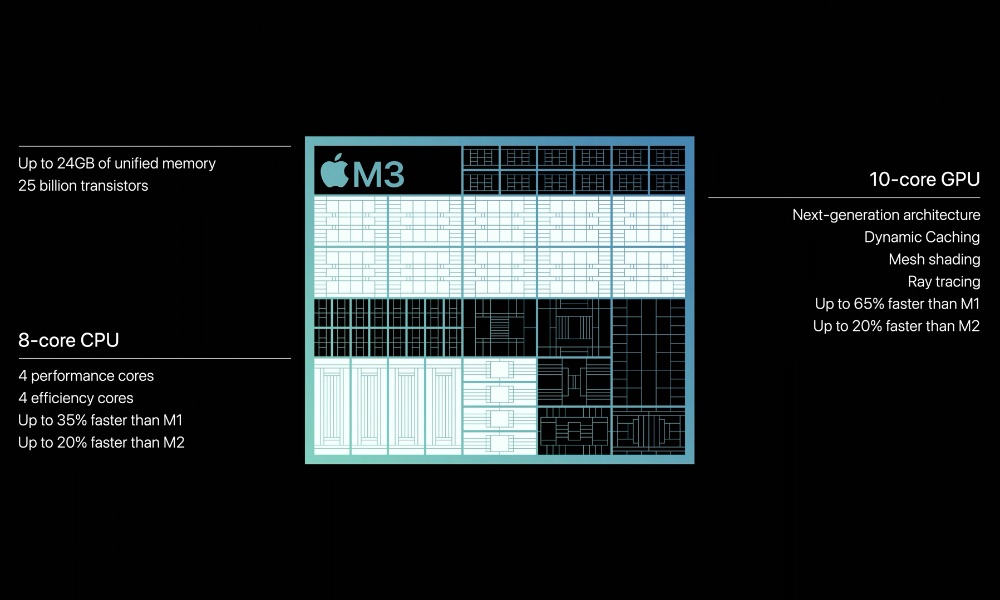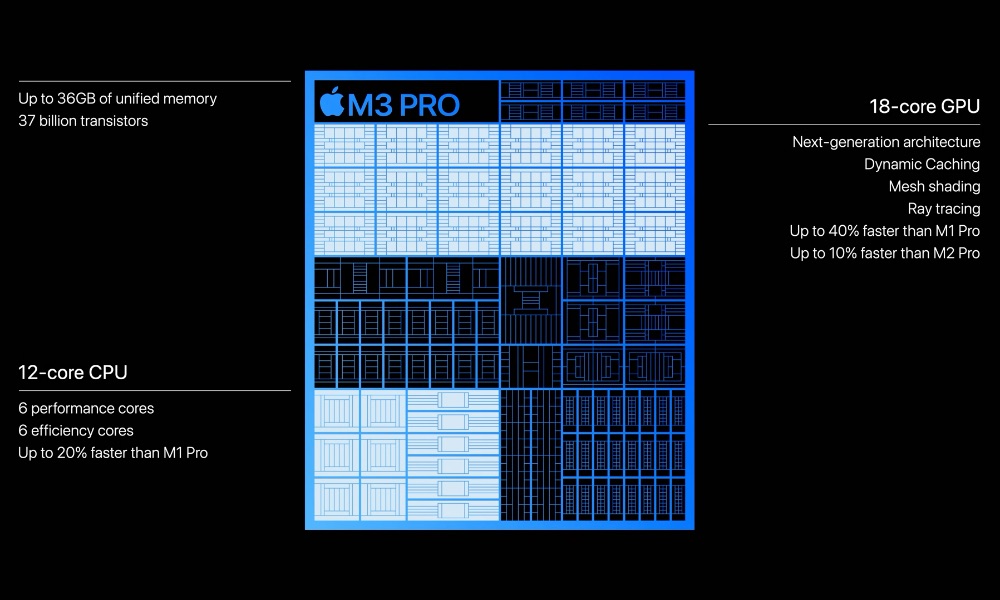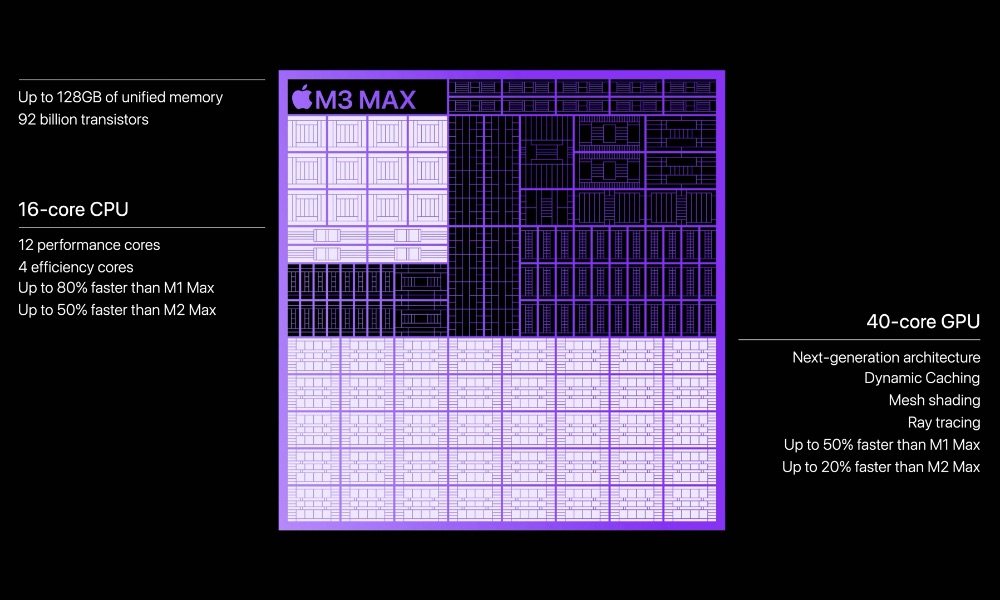Apple Unveils Its Full Lineup of M3 Chips
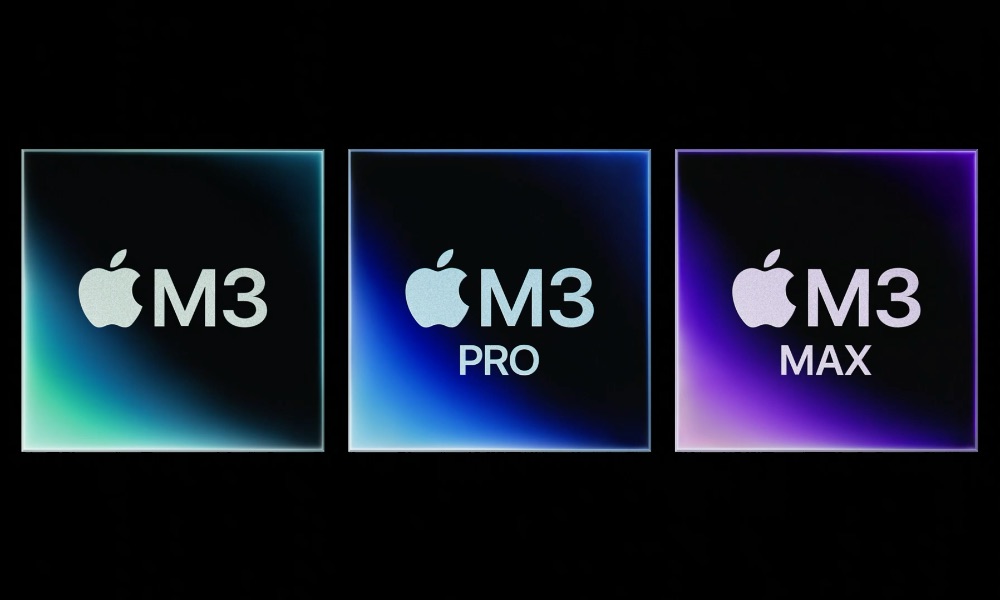
Toggle Dark Mode
As expected, last night’s Scary fast event ended up being all about the Mac, with the company unveiling the exact array of new M3-powered Macs that recent rumors predicted.
In keeping with the late hour and the Halloween theme, the main part of Scary fast opened with an ominous nighttime sweep into Apple Park and a black-clad Tim Cook emerging from the misty shadows. The remainder of the event maintained this motif, so clearly someone at Apple decided to have some more fun with this one.
Unlike past unveilings of Apple silicon, where the company introduced its entry-level chips — the M1 and M2 — in advance of their more powerful pro-grade versions, this year, Apple is debuting the entire M3 silicon family in one fell swoop — with the possible exception of an M3 Ultra, which may still come down the road when Apple refreshes its Mac Studio and Mac Pro.
However, the mainstream M-series chips were all in attendance, with Apple introducing the baseline M3 accompanied by the M3 Pro and M3 Max.
The New M3 Chip Family
As Tim Cook handed the event over to Johny Srouji, the camera swept into a deep and dark underground facility where Apple’s chief chip designer and Senior VP of Hardware Technologies came out of the shadows into a much crypt-like tech lab, opening with an old B-movie style “Welcome to my lab” tagline.
Srouji highlighted the usual benefits of Apple silicon, including the “industry-leading power efficiency” and “state-of-the-art designs,” before focusing on what the new M3 generation brings to the table.
Tonight we’re doing something we haven’t done before, as we bring our latest technologies to a broader set of users more rapidly than ever. We’re launching the next generation of Apple silicon for the Mac by debuting three breakthrough chips at the same time.
Johny Srouji
Srouji also touched on the unprecedented simultaneous release of all three classes of M3 chips to cover the entire range of its customers’ needs.
Like the A17 Pro, all of the M3 chips have been fabricated using a new 3 nanometer (3nm) process, making them the first chips to be built for a personal computer using this technology, which allows for transistors so tiny you can fit two million of them in the cross-section of a human hair.
The result is that Apple’s most powerful M3 Max chip now features a staggering 96 billion transistors.
Considering the GPU-focused improvements on the iPhone 15 Pro’s A17 Pro chip, it’s not a big surprise that Apple is doing the same with its new M3 series, where Srouji notes the “biggest advance is in the GPU,” which takes “the largest leap forward in graphics architecture ever for Apple silicon.”
This includes similar hardware-accelerated ray tracing features to those found on the A17 Pro, which models the physical properties of light as it interacts with a scene so games can render more accurate shadow and reflection to create more realistic environments. This is joined by hardware-accelerated mesh shading and a new graphics architecture that delivers rendering performance that’s 2.5 times faster than the M1 family of chips or 1.8 times faster than the M2.
More significant for developers is that Apple is debuting an industry-first Dynamic Caching feature in the GPU that provides much better memory allocation. As Srouji explains, other GPUs require software developers to determine the amount of GPU memory that their apps will need at compile-time; this makes each app require a fixed amount of graphics memory based on the requirements of the app’s most demanding task, leaving that memory allocated even when it’s not being used.
With Dynamic Caching, graphics memory will be allocated by the M3 silicon in real-time, which means only the exact amount of memory needed is used for each task at any given time. According to Srouji, this will dramatically increase the average utilization of the GPU, significantly improving performance for the most demanding apps and games.
The M3 chips are also adding a new AV1 decode engine to enable more power-efficient playback from YouTube, Netflix, and other streaming services.
As with its previous advances in Apple silicon, Apple has also managed to make these performance boosts without any compromises on power efficiency, with the M3 CPU delivering the same performance as the leading 12-core PC laptop chip at only one-quarter of the power — a feat which also allows Apple silicon to perform just as well on battery as it does when plugged in.
All of Apple’s M3 chips, from the base M3 to the M3 Max, gain the same CPU and GPU improvements. It’s the number of cores in each and the unified memory that represent the most fundamental differences between them.
With our scalable architecture, we tailor each M-Series chip for different user needs to deliver best-in-class features to every user.
Johny Srouji
The standard M3 continues to offer the same 8-core CPU and 10-core GPU as its M2 predecessor, with four performance and four efficiency cores. However, the performance of each core has naturally been improved, particularly on the GPU side, resulting in performance up to 65% faster than the M1 chip. It continues to support up to 24GB of unified memory, so it’s the GPU improvements that are the real game-changers here.
The M3 Pro similarly features the same 12-core CPU architectures as the M2 Pro — six performance and six efficiency cores — but the GPU drops to an 18-core configuration, while the unified memory can now go up to 36GB. Again, the CPU cores are undoubtedly faster than those in the M2, and the GPU architecture has improved to the point where it still beats out the M2 Pro despite having one less core. Still, it’s telling that Apple only lists it as 10 percent faster in GPU performance and 20 percent faster in CPU performance.
It’s ultimately the M3 Max that gets the most significant boost here, with a 16-core CPU (up from 12 cores), which is tuned more heavily toward the performance side — 12 performance cores and only four efficiency cores. That puts the CPU side at 80% faster than the M1 Max and 50% faster than the M2 Max. The GPU also increases to a 40-core configuration that’s 20% faster than the M2 Max, and the chip now supports up to 128GB of unified memory — a level that was previously the exclusive domain of the M2 Ultra. This also results in 92 billion transistors — a 50% increase in the transistor count over the M2 Max.


